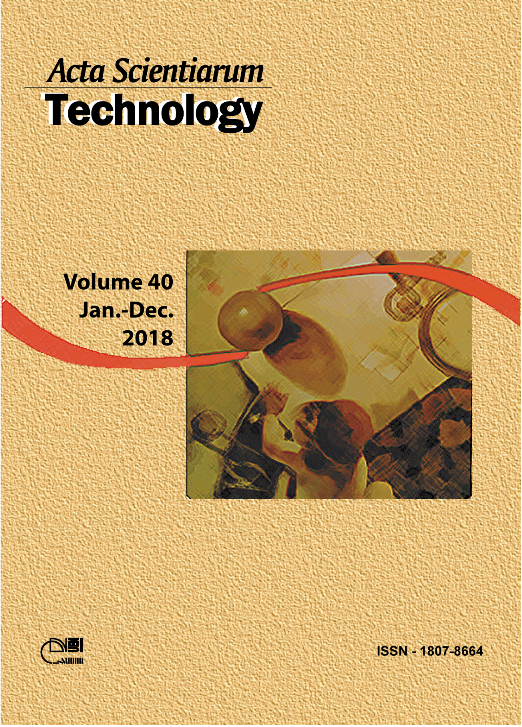<b>Statistical evaluation of models for sorption and desorption isotherms for barleys
DOI:
https://doi.org/10.4025/actascitechnol.v40i1.37689Palavras-chave:
Akaike information criterion, equilibrium moisture content, mathematical models, barley cultivar.Resumo
Â
This study presents a novel approach to evaluate water sorption and desorption isotherm modeling consisting in statistical evaluation of the fit followed by the ranking of the models. Water sorption and desorption isotherms for BRS Elis and BRS Cauê barley cultivars were evaluated at 40, 50, and 60°C. Data were analyzed by the GAB, Freundlich, Halsey, Henderson, Langmuir, Oswin, and Smith models. The BET model was also fitted to determine the moisture content. All models were submitted to five tests to determine whether the model was statistically significant. Then, the models were ranked using corrected Akaike information criterion. At all temperatures, the equilibrium moisture content increases as water activity increases and temperature decreases. Data showed no hysteresis in both cultivars. The statistical parameters evaluated indicate the goodness of the fit for all models except for the GAB model for BRS Elis cultivar at 60°C. The analysis with the corrected Akaike information criterion revealed that the Oswin and Henderson models showed best results at 40 and 50°C for both cultivars studied. At 60°C, the Freundlich model was the best for both cultivars. For both cultivars, the value of isosteric heat decreases with an increase in moisture content.
Â
Downloads
Downloads
Publicado
Como Citar
Edição
Seção
Licença
DECLARAÇíO DE ORIGINALIDADE E DIREITOS AUTORAIS
Declaro que o presente artigo é original, não tendo sido submetido í publicação em qualquer outro periódico nacional ou internacional, quer seja em parte ou em sua totalidade.
Os direitos autorais pertencem exclusivamente aos autores. Os direitos de licenciamento utilizados pelo periódico é a licença Creative Commons Attribution 4.0 (CC BY 4.0): são permitidos o compartilhamento (cópia e distribuição do material em qualqer meio ou formato) e adaptação (remix, transformação e criação de material a partir do conteúdo assim licenciado para quaisquer fins, inclusive comerciais.
Recomenda-se a leitura desse link para maiores informações sobre o tema: fornecimento de créditos e referências de forma correta, entre outros detalhes cruciais para uso adequado do material licenciado.



















